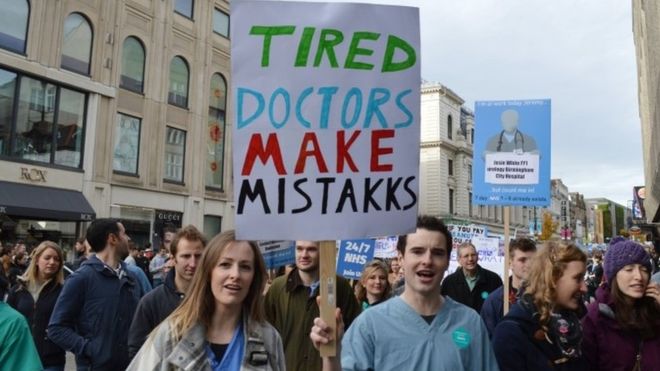In the last two blog posts on this subject, I’ve looked at the work of John Paul Lederach and Valerie Fournier in thinking about how change occurs in society. I’m returning to Lederach in this blog, to think about the next phase in social change – something, he calls “anchor points”.
Anchor points are people, places or communities to whom change has happened and who are on with the journey of starting alternative moral economies/experiments. They become anchors when they are rooted in a geography or set of relationships, which gives them a sense of longevity and consistency. Once infected with the virus that things cannot remain as they are, an anchor becomes a place where people dig deep, willing to make mistakes, to try new things, to fail early, to learn and to try again. This mixture of humility, bravery and innovation is vital if change is really going to begin to embed.
It begins to become really exciting, when anchor points connect. When a few people or communities within a given geography or inspired by the same hopes begin to connect, then the anchoring becomes even stronger. The space between the anchors, which some call transitional space or liminal space, becomes the place for strengthening and encouragement, but also the substantial reality in which the change begins to take place. My friend, Michael Schiffman sees it this way: “It’s like the emergent social change is of a particular colour. The hope of the social movement is not to take over the current institutions and try and lead them differently. Rather, the colour of the movement begins to flow into everything around it – communities, institutions, all facets of society. As it does, it begins to transform those spheres by infusing and diffusing its colour into and through them.” The change begins to happen almost unconsciously – and this is where one of two things can begin to occur: transformation or resistance.
Hitting against resistance is tiring and can feel intimidating. This is why anchor points need each other so much. They must hold each other, have each other’s backs, speak well of one another, believe the best and hold onto hope. They must continue to do their own inner work and stay true to the values which they hold. AND importantly (as Hilary Cottam taught me), they must learn what they are saying no to, as much as what they are saying yes to. As they do this, they will find fresh opportunities to bring change. My friend Roger MItchell talks about this around the concept of ‘Kenarchy’, which literally means the emptying out of power, or self-giving, others-empowering love. In his work, ‘church, gospel and empire’, he looks at love as an antidote to power. Social change, he argues, happens through a three-fold pattern of subversion, submission and substantiation. In other words, social change happens, as per Fournier, through outrage and challenging the inevitability of current social norms (subversion); creating moral alternative economies – but situated in the current realities – not somewhere or somehow separately (submission); and then making those things real in that context and thereby giving them grit/substance in every day life – anchoring them in communities (substantiation).
Once a social movement becomes substantiated it really begins to effect wider change. It has found enough momentum to begin to saturate it’s context with a new possibility that is no longer a dream on the horizon but a truly alternative way of being in the here and now. At this point it will either be resisted more forcefully, in which case, it has to become even more resilient and anchored, or it will begin to change and effect every level of society, including the very important arena of policy and governance. The biggest danger to the movement at this point is that it becomes subsumed, commodified and severely compromised by those powers who do not really want it bring about radical change and therefore alter it enough to still look a bit like radical change, but in actual fact simply ensure it serves the status quo, but in another guise! Resist and keep on loving!



 This situation exposes something far deeper than just an argument between Jeremy Hunt and the BMA and is far more important than discovering who has the strongest will power. Infact, the BMA have made a major error in targeting Jeremy Hunt so vindictively, because in the final analysis, this isn’t about Hunt at all. Jeremy Hunt can be replaced in a moment, and is likely to be succeeded by a far more robust
This situation exposes something far deeper than just an argument between Jeremy Hunt and the BMA and is far more important than discovering who has the strongest will power. Infact, the BMA have made a major error in targeting Jeremy Hunt so vindictively, because in the final analysis, this isn’t about Hunt at all. Jeremy Hunt can be replaced in a moment, and is likely to be succeeded by a far more robust  Boris Johnson, who will simply pound his fist more visciously. To make Hunt the scape goat narrows this debate to something far too insignificant and actually strengthens the government’s ability to do exactly as they please.
Boris Johnson, who will simply pound his fist more visciously. To make Hunt the scape goat narrows this debate to something far too insignificant and actually strengthens the government’s ability to do exactly as they please. place, the goverment could instead have said to all the hospital trusts across the country what their hopes and intentions were and then waited to see if this was workable, in what way and how much it would cost. But you cannot simply act like Pharoah and expect the brick makers to make ever more bricks with less and less resource available – otherwise, you face an exodus!
place, the goverment could instead have said to all the hospital trusts across the country what their hopes and intentions were and then waited to see if this was workable, in what way and how much it would cost. But you cannot simply act like Pharoah and expect the brick makers to make ever more bricks with less and less resource available – otherwise, you face an exodus! The system, to which we must all bow doesn’t care for the needs of the people who work within it. It will force them to submit. Why should doctors (many of whom work for less than the minimum wage, when on call) be allowed time to rest at weekends? Why can’t everybody have routine care through the weekend, just as from monday to friday (even though most of our top clinicians think we need better emergency care and not routine access)? Surely our economy needs this kind of health service? And actually, whilst we’re on it, isn’t it a waste of time, allowing teachers to have weekends off as well? Don’t we need our children to work harder, or at least be given some sort of babysitting service, so we can get more for our pound of flesh from their parents? If we are to have a 24/7 health service, why not a 24/7 education service? Our shops are already open practically 24/7. In this commercial world – shouldn’t everything else follow suit? No, no and NO!!
The system, to which we must all bow doesn’t care for the needs of the people who work within it. It will force them to submit. Why should doctors (many of whom work for less than the minimum wage, when on call) be allowed time to rest at weekends? Why can’t everybody have routine care through the weekend, just as from monday to friday (even though most of our top clinicians think we need better emergency care and not routine access)? Surely our economy needs this kind of health service? And actually, whilst we’re on it, isn’t it a waste of time, allowing teachers to have weekends off as well? Don’t we need our children to work harder, or at least be given some sort of babysitting service, so we can get more for our pound of flesh from their parents? If we are to have a 24/7 health service, why not a 24/7 education service? Our shops are already open practically 24/7. In this commercial world – shouldn’t everything else follow suit? No, no and NO!! This is why we need a revolution of solidarity and resistance. We need a people movement who will stand together and be brave enough to say that there is a different way to see the world and a new way to live within it. Our naked life itself, although currently abused, can become for us our greatest power. Our naked life can expose the truth of just how abusive our systems have become. Our naked life, when combined with the indestructable force of kenotic love, becomes the very agent of change that we need.
This is why we need a revolution of solidarity and resistance. We need a people movement who will stand together and be brave enough to say that there is a different way to see the world and a new way to live within it. Our naked life itself, although currently abused, can become for us our greatest power. Our naked life can expose the truth of just how abusive our systems have become. Our naked life, when combined with the indestructable force of kenotic love, becomes the very agent of change that we need. really demonstrate the power of naked life……how about naked marches?!! (I grew up in Coventry, and so the story of Lady Godiva is in my blood – nakedness overcame oppression once before!). Or maybe the staff of the NHS should all turn up to work with no clothes on?!! How about people stripping off at least to their underwear to expose both the fragility and the power of naked life?!
really demonstrate the power of naked life……how about naked marches?!! (I grew up in Coventry, and so the story of Lady Godiva is in my blood – nakedness overcame oppression once before!). Or maybe the staff of the NHS should all turn up to work with no clothes on?!! How about people stripping off at least to their underwear to expose both the fragility and the power of naked life?!